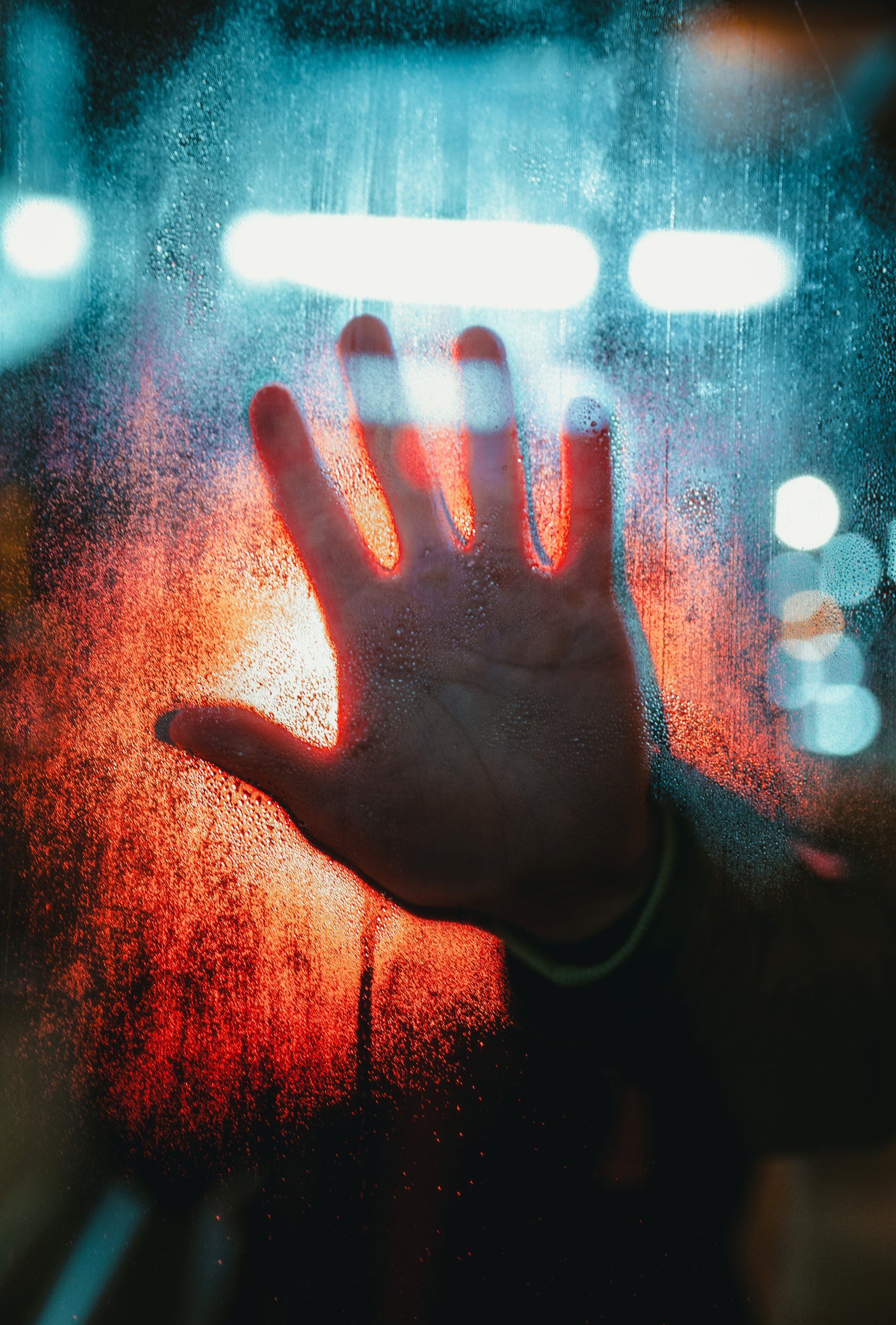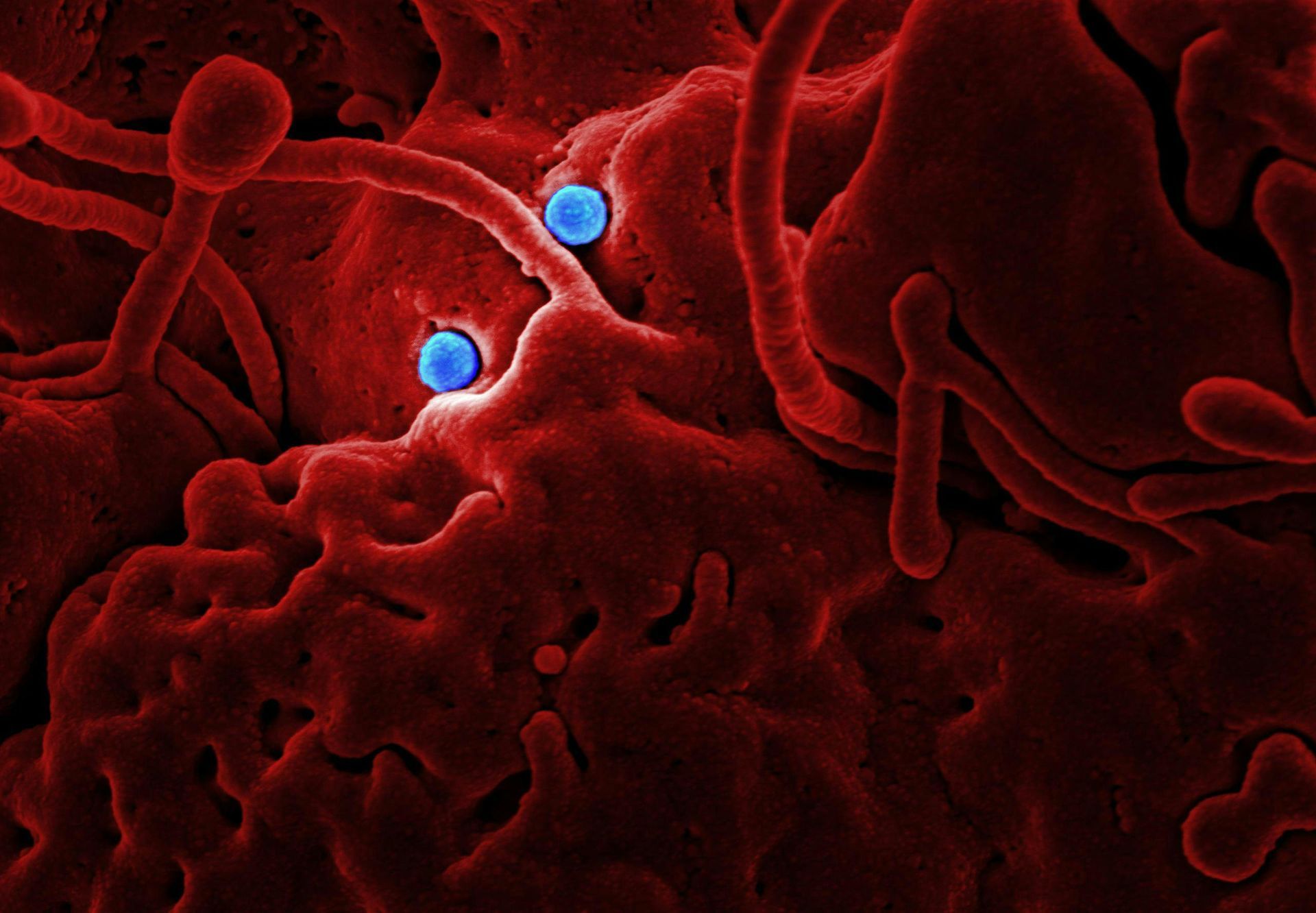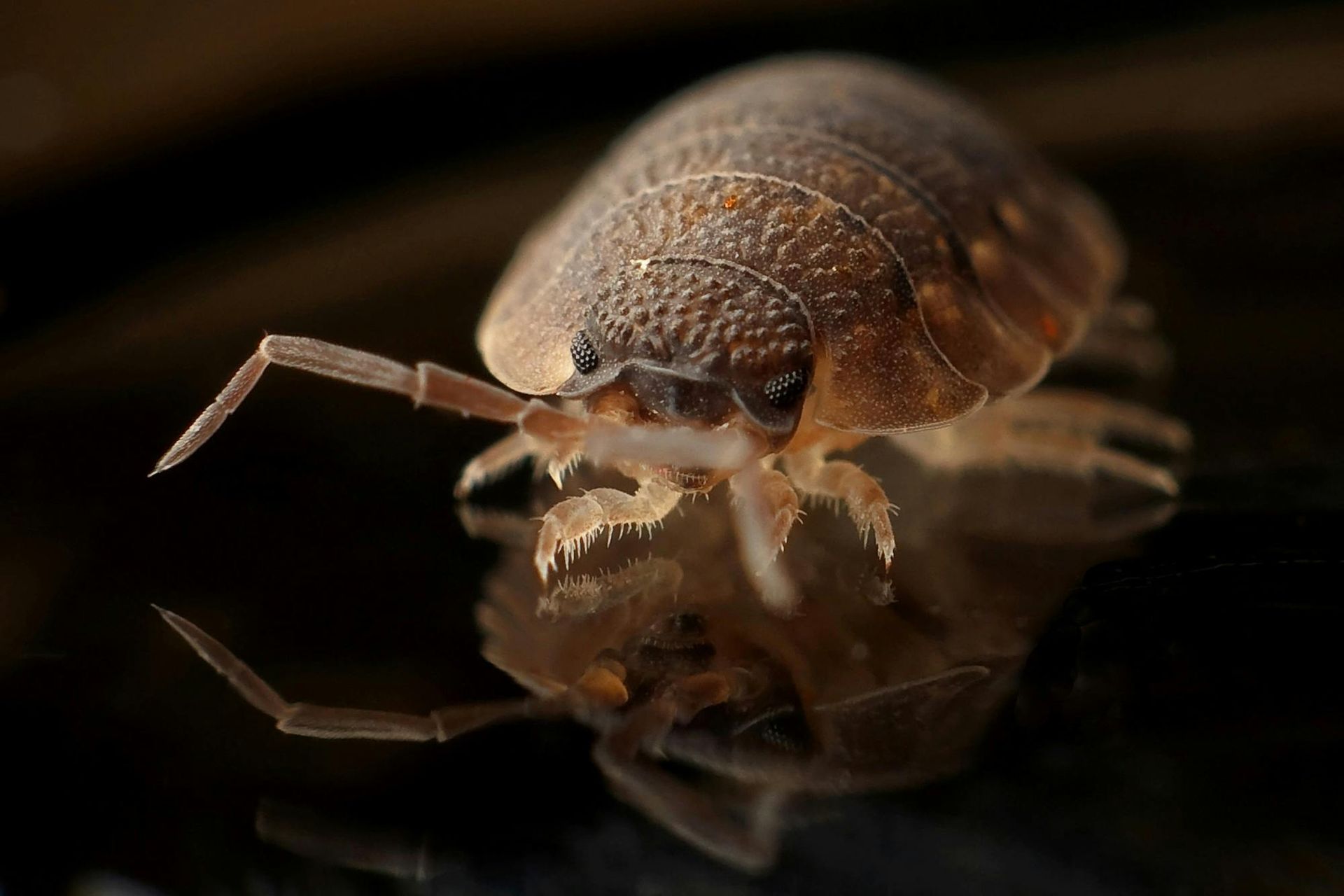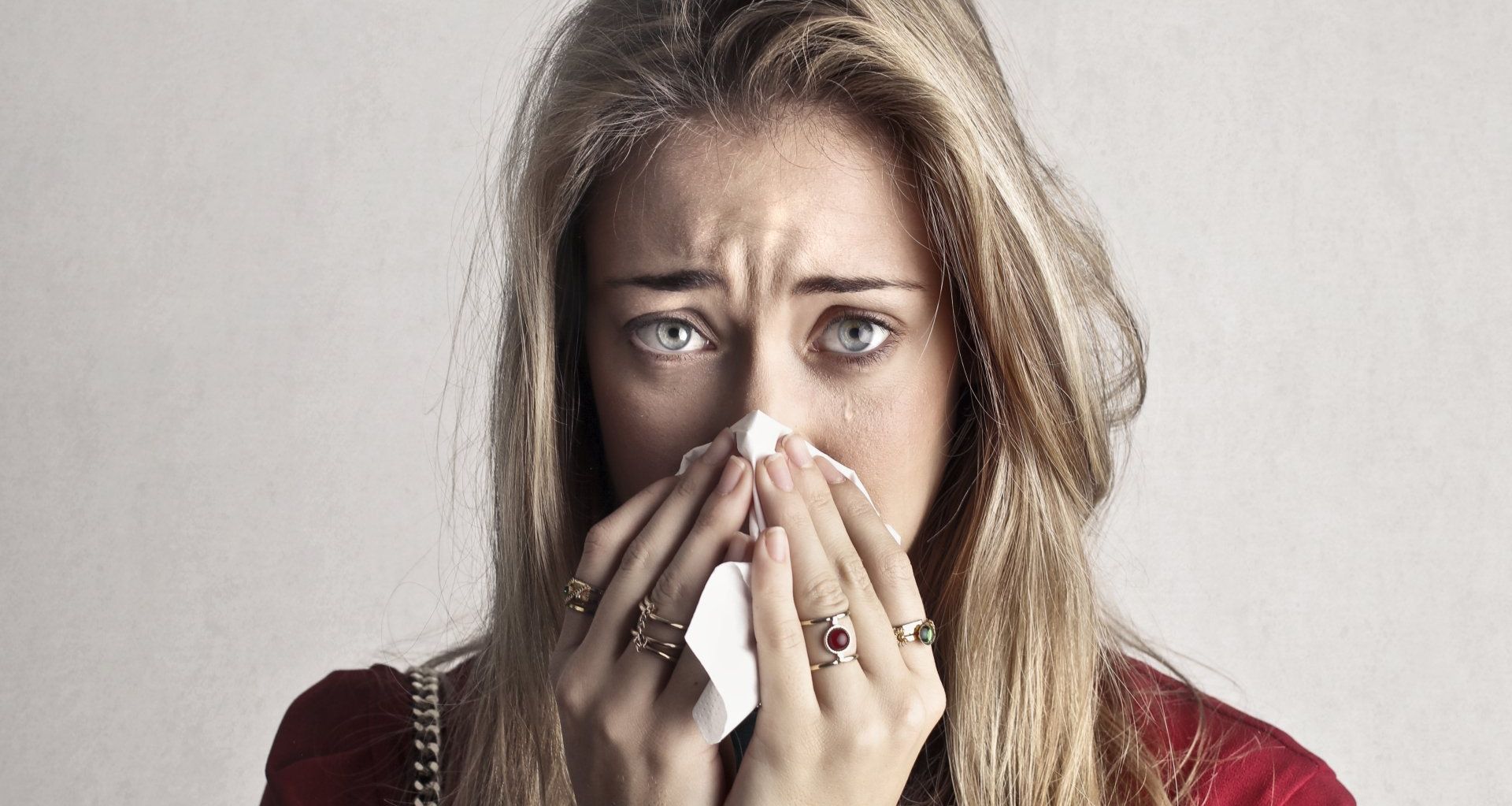News

Thanks to global travel sending people around the planet in a matter of hours, disease spreads remarkably fast in the modern world. We're seeing an ongoing covid surge in Asia at the moment, reminding us that we can't be complacent even through summertime when covid tends to draw back in the northern hemisphere. Let's take a look at what's out there right now. Singapore and wider Asia experience covid surges Singapore's Ministry of Health and their Communicable Diseases Agency are both keeping a close eye on a covid surge that kicked off in May, a serious matter even though there's no sign the circulating variants are either more transmittable or cause more serious disease than previous variants. At the end of April to early May, weekly cases shot up to 14,200, up from 11,100 the week before, with average daily hospitalisations also rising. It isn't unexpected, with waves expected through the year, and the surge could be partly down to falling immunity in the general population. At the moment Omicron LF.7 and NB.1.8.1, both of which have descended from the JN.1 variant used for vaccines at the moment, are the main culprits in Singapore, accounting for more than two-thirds of local cases. On the bright side neither of the two new variants are thought to be 'of concern'. But new covid fears are emerging as Asia's surge carries on. Cases in India, Thailand and Indonesia are all on the increase, which heightens the risk of new and more dangerous variants emerging. The NB.1.8.1 subvariant has already spread to numerous countries thanks to its powerful ability to bind to human cell receptors, and it may ultimately prove more infectious. How will the Asian covid surge affect the UK? We're already seeing warnings from the UK's medical sector about a new covid symptom as the Nimbus variant takes hold here. Apparently anyone with what they're calling a 'razor blade' throat could have picked up this this new, 'highly contagious' covid variant. Nimbus is a descendant of Omicron and we're already seeing cases here following the original surges in Singapore, China and Hong Kong. Look out for fatigue, a very sore throat, blocked nose and an uncomfortable gut. The extreme sore throat is a new symptom, a sharp, stabbing pain at the back of your throat when you swallow. You might also have a red sore patch in the back of your mouth and swollen glands in your neck as your immune system kicks in. Other than that the symptoms are mostly what you'd expect from covid: a fever, aches and a blocked nose, a continuous cough, high temperature, loss of sense of smell and taste, and feeling sick. Most of the time it's mild but as usual, vulnerable people are more at risk. There have been 13 UK Nimbus cases confirmed in the UK so far, but experts say there are likely to be a lot more simply because there's not as much testing as there was during the pandemic itself. But UK Health Security Agency data does reveal positive tests have shot up to record levels, already 97% more than we saw in March 2025. And that's why some experts are worried there'll be a surge of the new strain in the UK this summer. If you're vulnerable, the official recommendation is to get a vaccination. But even if you do, and even if you've already had covid, you can still catch the virus because your immunity fades over time. Plus, covid is known to spread more easily in the hot, humid weather we've been seeing. With covid named as a factor in 300 deaths in England throughout May, this is no time to relax your guard. The UKHSA is keeping a close eye on things. Elsewhere in the world, according to the WHO, Nimbus is responsible for just under 11% of covid worldwide, compared to 2.5% a month earlier. Simple UVC disinfection does the trick Our low cost, highly effective UVC disinfection units kill a huge list of pathogens in record time, leaving your premises cleaner and safer than a team of human cleaners could hope to achieve. As a healthcare facility, care home or educational establishment, cinema, theatre, gym or anywhere else people congregate, you might want to protect your business now, just in case we see a sudden surge. You'll be pleasantly surprised by how easy and affordable our units are, and they're super-simple to fit.

According to the experts at the World Economic Forum , climate change is predicted to speed up the spread of fungal infections worldwide. Because fungi are responsible for millions of infections and as many as two and a half million deaths a year, it's something to keep an eye on. An increase in extreme weather events helps spread fungi in the first place. Climate change is making more countries vulnerable to fungi as the weather reaches the perfect temperature to make fungi feel at home, then stays warm. Fungi don't just make people ill, they can also cause severe property damage. Heavy rain and flooding mean water damage and associated moulds like dry rot, cellar rot and wet rot will start to affect more buildings. As fungal diseases spread and farmers are forced to use more agricultural fungicides, fungal resistance may rise. And because fungi are so adaptable, new types of fungal infections can easily emerge. Meet Aspergillus fumigatus and A. Flavus Aspergillus fumigatus is tipped as one fungal species to watch, potentially increasing its range by a worrying 77% by the end of the century and reaching into the far north of Europe, Asia and the Americas. Experts say it could expose 9 million more people in Europe alone to danger. Aspergillus is a common mould living in soil, compost and indoors. It causes the lung disease aspergillosis, which can spread around the body to affect other organs, a serious risk for people whose immune system is weak. It's so nasty the WHO has named it one of their top 4 fungal threats. Then there's A. flavus, which infects crops as well as containing toxic aflatoxins that can cause liver cancer. The WHO says climate change could shift its comfort zone further north as more places hit temperatures of 37°C. It could soon start to spread across north China, Russia, Scandinavia and even Alaska as its traditional stamping grounds in places like Africa and Brazil become too hot for it. Because the symptoms these fungi and others like them cause are so similar, they're often hard to diagnose. And this lack of awareness could be our undoing. Limited treatments, booming drug resistance and low investment in antifungal drug development could make the future even less certain. No wonder researchers and clinicians want governments to take fungi more seriously as a global health threat. As one expert said, “In 50 years, where things grow and what you get infected by is going to be completely different.” UVC light comes with an impressive kill list Check out our UVC Kill List , see how many fungal threats are inactivated quickly and efficiently simply by using UVC light at a special wavelength. Our UVC disinfection units are the perfect solution for all sorts of business wanting to steal a march on climate change-driven disease, allowing you to be prepared before new infections arise and existing ones move around the globe.

Does your business rely on UV disinfection? Are you still using old-school mercury based lamps, the traditional low pressure and medium pressure lamp tech? If so, now is the perfect time to make the shift to greener, cheaper, much more efficient UV-LEDs and help future-proof your business. The rise of UV LED and the fall of mercury Mercury-added lamps have been the standard system for a very long time, and they've always worked well. Now the RoHS directive (Restriction of Hazardous Substances in Electrical and Electronic Equipment), which restricts hazardous substances in electrical and electronic equipment to protect the environment and public health, plus soaring demand for greener alternatives mean mercury is on the way out at long last. It's good news when mercury is so dangerous, and it is all down to UVC-LEDs. Super-fast change heralds a bright LED future The change is happening fast. It has taken UVC LEDs less than five years to catch up with and match the wall-to-plug efficiency of low and medium-pressure mercury lamps, partly because of increasing interest from the semiconductor sector. Many of the world's biggest semiconductor players, including Google, know that the materials, physical properties, and crystal-growing processes used for today's high-power transistors align surprisingly well with the tech used in UV-emitting LEDs. The result is a widespread, broad-brush transition moving so fast it's almost a revolution. Where to begin your transition to UV-LED tech So how do you ring the changes at your organisation? Experts recommend a steady approach led by smart, step-by-step modernisation. The first step is to figure out where you can add the most value by bringing the new tech into play. You'll need to establish which elements you can safely leave as they are for the moment and which deserve your initial focus. Then you'll want to create a future-proof technical foundation for the change. Perhaps you could set up test projects to trial UV-LEDs in situations where size matters, the capability to turn things on and off instantly is important, or there's an unusually strong environmental imperative. Low power usage, simple tech, brilliant results You could, of course, ignore the UV LED trend. But the dramatically lower power usage, low cost tech, low heat and more mean UV-LEDs aren't just delivering efficiencies. They also come with potentially huge energy cost savings and a greener profile that can give your business a competitive advantage over companies still generating UV light the old, energy inefficient, less environmentally friendly way. No wonder, as the pace of change accelerates, the world is seeing more traditional UV companies taking on the entire value chain from LED lamp manufacture to integrating the tech into end-use systems. Will you lead the UV-LED revolution? UV-LED trailblazers like us make a good starting point for advice and insight. We have the technical expertise and data to support you in developing projects and testing applications. You could maybe tap into existing applied scientific research by respected European institutions with a strong background in LED tech in the lab, experienced in optimising real-world solutions and bringing the tech into industrial settings. Find support to get where you want to be Transitioning to UV-LED tech means change but there's no need to throw everything out. It's about evolving alongside the tech. Make a start now and you'll be in a better competitive position sooner. If that sounds worth exploring, we'll be pleased to talk UV-LED with you.

Anyone who has seen a TV advert for fancy yoghurt knows there are good bacteria and bad bacteria. The former can enhance our lives and health, the latter can kill us, and while you might think these kinds of diseases belong in the third world, some of them are turning up in western nations many people would normally consider safe. Here's what's floating around the globe at the moment bacteria-wise. Diphtheria hits Lagos The Lagos Government has set its Emergency Response Committee on the case after an outbreak of diphtheria at King’s College. Apparently the outbreak has been brought under control and the authorities have asked people not to panic. Apparently one 12-year-old pupil, who was suffering from a sore throat and fever in late February, was quickly referred then admitted to the paediatric emergency ward at Lagos University Teaching Hospital, given powerful antibiotics plus a full dose of diphtheria antitoxoid serum. Sadly the little boy suffered from 'progressive and irreversible' inflammation of the heart and died, myocarditis being a serious complication of the infection. Officials are keeping a close eye on 34 people who've had close contact with the boy, 14 of whom have already developed symptoms 'consistent with diphtheria'. Two die from invasive group A streptococcal disease in Canada The problem with prisons, as we know from covid, is diseases spread like wildfire when people are kept in crowded conditions where there's little or no fresh air. Two people have died at the Maplehurst Correctional Complex at Milton in Ontario, Canada, thanks to an outbreak of invasive group A streptococcal disease. Inmates are being checked every day, those with symptoms are being assessed and treated, and prison staff are carrying out 'additional cleaning'. The prison is also battling an influenza A outbreak 40 new cases of shigellosis in Oregon, USA Since January 2025 forty new cases of shigellosis, caused by the Shigella bacteria, have been reported in Oregon, USA. The illness affects the the intestines, causing dysentery, fever and stomach pain. Apparently cases have been rising for more than 12 years, with the illness now turning up in the Portland Metro area. Officials are calling it 'concerning'. Oregon saw high numbers of cases through 2024 as well, with two separate outbreaks of different strains . 2025's outbreak is down to a Shigella sonnei strain that turned up in spring 2024. Out of 197 cases across the USA, over 60% are currently in Oregon and 14 'sub-clusters' have been pinned down. The source hasn't been found yet. 14 dead from Melioidosis thanks to soil bacteria in Australia A soil-dwelling bacteria called Melioidosis has killed 14 people in Queensland, Australia. This rare antibiotic-resistant disease is caused by bacteria in soil and mud in tropical regions, released after heavy rain or floods. The death toll makes 2025 a record-breaking year, like nothing the area has seen before. So far this year there have been 94 infections. Illness happens when a person inhales the bacteria or it somehow gets into a person's bloodstream. Most of the current patients caught the illness from breathing it in. Experts say climate change is at the heart of the unprecedented outbreak, with Queensland seeing unusually heavy flooding following 1.5m of rainfall that engulfed homes, businesses and roads. Melioidosis comes with a fatality rate as high as 50% because it is unusually aggressive as well as resistant to antibiotics, leaving people with weak immune systems most at risk. The symptoms include fever, difficulty breathing, coughing, and headaches. The latest on Congo's mystery bacteria Last time we mentioned the cluster of deaths linked to a mysterious illness in the Democratic Republic of Congo. Now the WHO has a theory – it could be either poisoning or bacterial meningitis. So far it has killed 53 people since it was first spotted on 9th February, and around 1300 are suspected to have caught it. Because the symptoms, including fever, chills and headaches, are very like malaria and a raft of other illnesses, it is proving a challenge to interpret any ongoing trend. US hospitals and nursing homes hit by listeria A deadly listeria outbreak in the USA has been linked to drinks, namely a type of frozen nutritional shake drink served up in nursing homes and hospitals. There's a nationwide recall going on. So far 38 people have been infected across 21 states, and 12 have died. Stop bacteria before they stop your business! Our UVC sanitising units are proven to inactivate more than 50 horrible bacteria within minutes including Bacillus anthracis (Anthrax), Campylobacter jejuni ATCC 43429, Escherichia coli O157:H7 CCUG 29193, Streptococcus viridans and Salmonella typhimurium. There's every reason to believe they can do the same deadly damage to other bacterial threats. If you'd like to know more about protecting your business against them in a fast-changing climate change world, give us a call.

Rentokil is predicting a bed bug boom for 2025. If they're right we face a shocking rise of 67% year-on-year thanks to increasingly warm weather. Here's what you need to know about the revolting little creatures that cause such havoc in homes, resorts, hotels, hospitals, and basically anywhere there are soft furnishings and bedding for them to snuggle into. First, to stop your skin crawling too much, it's good to know that UVC light 'negatively impacts bed bug survival and host-seeking abilities'. Click here to download a science-led .pdf all about it. As the report concludes: 'This project strongly suggests that UV light is effective, both in killing bed bugs, and in impairing their ability to reach a host. Perhaps the most encouraging aspect of this study was the dramatic effect UV light had on the egg stage. While eggs have proven to be most resistant to current control tactics, they are highly vulnerable to UV treatment.' Bed bug facts to make you itch Blood-sucking bed bugs live on furniture and bedding, and their bites itch like mad, the last thing you want in your public-facing business. The bugs are at their lowest levels in January-February but by the end of March they're on the rise again, ramping up fast until their numbers peak in August and September. The late summer peak and winter lows have been proven by science, reported by the Journal of Medical Entomology. Bed bug numbers respond to warm weather. When it drops below 13C they nod off, going into hibernation. They can stay is this state of suspended animation for as long as a year, only waking up when things get warmer and they sense food in the shape of humans. If the weather drops below freezing they die, and anything above 45C also kills them off. The temperature they like best is human temperature, which is why they're so happy living indoors with us, where it never gets cold or hot enough to stop them in their tracks. When we go on holiday bed bugs enjoy another opportunity, this time spreading themselves around hotels, apartments, villas, guest houses and B&Bs, hitching a ride on the nearest unsuspecting person, hiding in luggage and sneaking around inside our clothing. It's no surprise the hospitality sector suffers more than any other from bed bug infestations. A guest with just one bed bug on board can cause chaos. Every female bed bug lays as many as seven eggs a day, and the babies mate with each other to create a disgusting never-ending circle. Hiding during daylight, they come out an night to feast on human blood, quickly spreading until they infest an entire building if they're not stopped in their tracks. They can crawl as fast as 100 feet an hour, reaching every area of a building in a short time. It can be hard to know there's an infestation because people just assume they've suffered an ordinary insect bite or two. Worse still, because some bed bug bites don't start to itch straight away, the source isn't always obvious. On the journey back from holiday they can hop off you or your luggage to infest boats, planes, trains, taxis, other travellers and their luggage, and ultimately your home. No wonder 2020 and 2021 were low bed bug years, with covid preventing travel and keeping us all at home. Now UK bed bug numbers have shot up again, 2025 is looking like a bumper year and London – being an international tourist destination – could be in for a particularly bad bed bug season. How to stop an infestation of bed bugs Early detection is really important. The earlier they're detected, the earlier they can be dealt with and the spread stopped. Otherwise customer complaints, bad reviews and even prosecutions could be on the cards for your hospitality business. Human cleaners aren't much help simply because the bugs like the dark, spending all day hiding, and they're really small anyway. Spray pesticides are not much use when the pest control company can't see where the bugs are hiding. Worse still, the creatures are quickly evolving immunity to the powerful pesticides that used to kill them off. If you'd like to know more about our simple, affordable UVC disinfection tech, which quickly inactivates an enormous list of common and not-so-common pathogens, get in touch for an inspiring conversation.

So what has been going on in the wonderful world of viral and bacterial infections? Read on if you're responsible for hygiene at a school or university, hospital, cruise ship, nursing home, restaurant, cafe, gym, clinic, surgery, hospitality setting, office, factory, childcare setting, on public transport, or at a theatre or cinema. Basically, wherever there's a risk of infections being spread, our UVC mobile sterilisers take the strain... pun intended! Parvovirus B19 This week the HSE has reminded the UK about a contagious viral infection that is common in children. It's nicknamed 'slapped cheek syndrome', is caused by parvovirus B19 and mostly clears up on its own after a few weeks. The virus spreads to humans, surfaces and objects when infected people cough or sneeze near them. Like many viral infections parvovirus B19 can be 'serious' in adults and the vulnerable. The story highlights, once again, the importance of good hygiene in public spaces and businesses. Norovirus hitting the UK harder than last winter As revealed by NHS England in late February, the UK has seen a record-breaking number of patients in hospital with norovirus, an average of 1160 a day, more than twice the number seen at the same time in winter 2023-24. RSV hospitalisations more than double compared to last year NHS data also reveals RSV cases are rising, with an average of 22 children in hospital with RSV per day in late February 25, up 83% compared to earlier in the month and more than double what we saw at the same time last winter. Mystery viruses lurking in the wings A mysterious viral disease has been affecting the western Democratic Republic of Congo, causing 60 deaths so far. The latest viral epidemic to hit the East African in the last year, it follows on from outbreaks of Marburg and mpox. The WHO says the new disease is neither Ebola nor Marburg, but it comes with the same dreaded symptoms of haemorrhagic fever. Thanks to covid we all know how fast a virus can travel around the modern world, in a global economy, which keeps these worrying infectious pathogens on the science community's radar. Antibiotic resistant bacteria are winning the battle Antibiotics are used to treat bacterial infections, but they are gradually losing their power. Antibiotic resistance happens when bacteria can evolve to withstand the drugs, making illnesses a lot harder and sometimes impossible to cure, for example antibiotic resistant TB. The resulting 'superbugs' already contribute to 35,000 deaths a year in the UK alone, directly kill more than 7500 of us in the UK every year, and cause the death of more than a million people annually worldwide. The National Audit Office says the UK is going to miss most of the targets set in 2019 to deal with antibiotic resistance. England's target to cut these infections by 10% between 2018 and 2025 has failed miserably, rising by 13% in 2023 alone. The problem is that some antibiotics are being released into the environment in 'unprecedented' quantities because they're being used in medicines and farming, for example being spread via sewage that escapes into rivers, or draining from farmland into streams. So how can you handle the threats and potential future threats of viral and bacterial infections at your business without spending a fortune or having to re-fit the entire building? Luckily it's a simple matter thanks to our powerful, safe mobile UVC hygiene units. Powerful, safe Direct Fixed Surface Sterilisation Our Mobile UVC LED Steriliser Units harness the power of germicidal lights, the perfect complement to everyday cleaning services carried out by humans. Because they offer such a fast turnaround, you don't have to suffer any downtime. Because these robust solid state UVC LED hygiene units don't contain mercury vapour they're perfect for fast disinfection without chemicals, simple to use and popular with cleaning staff. They're easy to wheel around from room to room and building to building for intense continual disinfection, and they're also perfect when you need to respond fast to an infection emergency. Opt for a 200w unit or a 600W unit to deployed fast disinfection with all the benefits of the one and only sustainable, no-chemicals pathogen-killing solution on the market at the moment. Why buy mobile UVC fixed surface sterilisation from us A UK-based company, we've been providing environmentally friendly, low energy solutions to the private and pubic sectors since 2006. Our UVC LED lamp tech suits every application and our tech is constantly evolving. If you'd like us to engineer a UVC solution specially for your business, we'll be delighted to go innovate for you.

Our UVC disinfection tech already uses UV light in the C spectrum to inactivate microorganisms so they can't make us ill, damaging the DNA and RNA inside pathogens, stopping them from reproducing and making them harmless. The idea has been harnessed for decades to keep people safe from disease. But what does the future hold for this promising technology? In this article we delve into future developments for UVC sanitisation. Recent advancements in UVC hygiene technology UVC LED innovation is marching onwards. The development of UVC LEDs has been a significant breakthrough in itself, being more energy-efficient, smaller and longer-lasting than old-school mercury bulbs. Research is ongoing, with the aim of improving LED tech's power and efficiency even more. Far-UVC 222 nm technology is driving particular interest at the moment because it might turn out to be safe for human exposure while still being deadly to pathogens. Recent studies show Far-UVC works hard to inactivate airborne and surface viruses without harming people's eyes or skin, but only time will tell whether it'll prove a promising tool for continuous disinfection in places where people gather and remain for some time. The safety aspect is clearly vital where people's health and wellbeing are concerned. 260nm LED light is gaining in popularity thanks to its insect attraction and repelling properties, a wavelength insects can't resist. 260nm LEDs can be used to trap and kill pests in an energy-efficient way without chemicals. It is also being explored for other purposes including scientific research, industrial curing, horticulture and indoor farming, where it's used to help stop the growth of mould, mildew, and other pathogens. It is even being used in specialist lighting for entertainment venues. Experts are expecting to see an increasing variety of applications developing across multiple sectors. Including UVC disinfection in HVAC (Heating, Ventilation and Air Conditioning) systems improves indoor air quality, something that suddenly became a lot more urgent thanks to the covid pandemic. The list of pathogens inactivated by the light is long and impressive, bringing the power of UVC into many more settings, from theatres to schools, factories to nursing homes, offices to childcare. Portable UVC devices boomed during covid, but all was not well. Some cheap, badly-designed wands and hand-held lamps available online were found to be dangerous to humans and animals. The dramatic covid-led surge in these badly-designed personal UVC devices saw them being used to to disinfect surfaces, personal items and even water, and countless models are still on sale online. Drug-resistant pathogens don't stand a chance against UVC light, really good news when some antibiotic resistant strains of illnesses can and do kill people, as well as having the ability to spread like wildfire. It also has more potential to achieve in healthcare settings to combat hospital-acquired infections. UVC robots are being used more widely than ever in healthcare, including our own mobile units. Revolutionising the way hospitals approach infection control, they're being widely integrated into hygiene protocols as a solution to the age-old challenge of maintaining a sterile environment for patients who are vulnerable and susceptible to infections. While traditional cleaning methods fall short in eradicating all harmful pathogens, UVC robots do an excellent job of enhancing cleaning as well as freeing healthcare staff to focus on patients. High safety and regulatory standards are the name of the game. The European Medicines Agency’s Annex 1, for example, is set for full implementation by 2025, vital for refining clean-room contamination control strategies. Extensive research is going on into Pathogen Inactivation Efficiency, to understand more about the optimal UVC wavelengths and dosages required to inactivate various pathogens, understand how UVC exposure affects different materials, especially in healthcare and food contexts, and investigate the long-term effects of UVC exposure on human health, particularly Far-UVC. Smart sensors like those we've integrated into our units detect the presence of humans and automatically shut off UVC LEDs to prevent exposure in occupied spaces, something we expect to become even more sophisticated over time. We're expecting to eventually see the light being integrated into consumer electronics, for example smartphones, wearable tech and domestic appliances, to provide continual disinfection. Smart new semiconductor materials like aluminium gallium nitride (AlGaN) are being tested. AlGaN is used to manufacture light-emitting diodes operating in the blue to ultraviolet spectrum, with wavelengths down to 250 nm (far UV) achieved, and some reports of 222 nm. The more efficient the units, the better for everyone. So will your business benefit from UVC sanitisation? Our units are easy to fit and retro-fit into ordinary light fittings. They're designed by experts and tested carefully to deliver safe, effective, low cost, safe sanitisation to places where people gather and in vacated spaces, giving businesses a wide choice of ways to stay clean and hygienic. If you'd like to talk things through, get in touch.

The UV Spectrum is complex. UV light spans wavelengths from 10 nm to 400 nm, divided into three sub-types based on the wavelength. UVA light, at 315-400 nm, comes with the longest wavelength, the least energetic but the most common at 95% of the UV radiation reaching the earth's surface. UVB light, at 280-315 nm, is the medium wavelength, a higher energy type of light that gives us sunburn. And UVC light, at 100-280 nm, offers the shortest, most energetic and dangerous type of UV radiation. The germicidal properties of UVC were first discovered in the late 1800s, and it has been used for disinfection for over a century, particularly in water treatment. UVC light is what we use in our popular disinfection units, engineered with care and expertise to create perfectly safe, affordable and highly effective ways to render a huge variety of pathogens harmless. Here are the facts about the powerful type of light that saves lives and supports better business, used for decades in healthcare, food, drinking water, HVAC systems, in medical and lab settings and more. UVC light and the ozone layer UVC light emitted by the sun, falling within the UVC Spectrum, is mostly absorbed by the planet's protective atmosphere, particularly the ozone layer. The ozone layer is made up of O3 ozone molecules, which gather in the stratosphere 10 to 30 miles above the surface of the earth. Ozone absorbs almost all of the UVC radiation, converting the high-energy radiation into heat in a process called photodissociation, splitting the ozone molecule into one oxygen atom and an oxygen molecule. This ozone-oxygen cycle continually creates and destroys ozone in the stratosphere, keeping things in perfect balance and protecting life on the planet. We've engineered UVC light for safety In its raw state UVC light is dangerous to the skin and eyes, causing everything from sunburn and premature ageing to skin cancer. When engineered into a safe solution its germicidal properties make UVC light a powerful tool for disinfection, destroying the molecular bonds between the DNA and RNA in bacteria, viruses, fungi and other threats so they can't reproduce. It's particularly good at breaking the thymine bases in DNA, causing mutations that prevent the pathogen from spreading and making people ill. How old-school mercury UVC lamps have been replaced with LEDs So UVC is one of the most effective ways to disinfect surfaces, air, and water, killing everything from E. coli to flu and covid. But the tech has come a long way in recent years, making it a much safer option. Old-school Mercury Vapor Lamps emitted the light at a wavelength in the 254 nm range, but everyone knows mercury is horribly poisonous, well worth avoiding when there's a safer, more environmentally responsible alternative. Then there are old-style Low-Pressure Mercury Lamps, used in germicidal settings but still involving mercury. The newer kids on the block, like ours, harness LED UVC for a more energy-efficient, durable and smaller-sized alternative. Built in safety features you can trust Our UVC devices are designed to be safe, emitting radiation in controlled environments or with built-in shields to keep people, plants and animals safe from harmful exposure. They're also a lot more environmentally friendly. Old mercury-based UVC lamps need to be disposed of very carefully indeed to avoid contaminating the environment. It's also good to know that artificial UVC light doesn't affect the ozone layer like CFCs and other pollutants, not adding anything to the ozone depletion problem. Practical, compact easy-to-fit and portable units Low Pressure UVC Lamps are used in many sterilization settings, for example air purifiers, HVAC systems and water purifying. High Pressure UVC Lamps giving off a more intense light are best for larger scale disinfection, for example treating sewage. UVC LED lamps and units like ours are compact enough to be portable thanks to their a compact design and energy efficiency. Some of our units are designed to be fitted into existing light fixtures, small and neat as well as long-lasting, pieces of kit with all the right safety measures built in. Some are so safe you can leave them on all the time. UVC units that can always be left on Here's an example. Our CT-X2 UVC LED Ceiling Air Circulating Purification Lamp is safe to have on all the time. It disinfects both the upper air in a room and the air from below, which is sent through a fan to increase the air circulation to protect people in the area. This model is perfect for continuous disinfection when people are present, places like offices, schools, sports centres, shops and healthcare settings. In effect these units deliver beautifully clean air as standard, integrating it into your premises. Choose from a handy industry standard 600mm or 300mm square ceiling tile unit. The X1 uses convection to provide continuous air disinfection, the X2's mechanical extraction design gives you silent air circulation and the X3 integrates both for surface and air sterilisation, great for your loos, changing rooms, lifts and other small spaces where people don't tend to spend a lot of time. That's just one of a variety of units designed for specific circumstances. Take a look at our other products, see how they could benefit your business, from mobile units you can wheel around to units specifically designed for vehicles. What's next for UVC? There's research going on around the world to find more applications for UVC light, including potentially using it in farming to handle plant pathogens and in food preservation to extend the shelf life of perishable foods.

Our UVC units kill viruses in just a few minutes, protecting people's wellbeing in all sorts of business and healthcare settings. It's good news when new threats are arising all the time. And it's even better news thanks to research revealing some common winter viruses could trigger heart complications. But as it turns out the viruses inside us, our lifetime companions, are on our side. Weirder still, viruses make sound – and scientists have been listening. Here's the news. The good – 380 trillion viruses inside us Did you know your body is occupied by huge numbers of microorganisms? You probably do, since together they make up our 'microbiome', something widely discussed in the media in recent years. While these tiny passengers have evolved alongside humans for millions of years, we've only just begun to quantify the human microbiome. Now we know it includes at least 38 trillion bacteria per human, but the biggest chunk of all is made up of viruses. Estimates say there are at least 380 trillion viruses inside every one of us, a lively, active community called the human virome. Luckily these viruses are not harmful like those that cause flu, covid, Ebola and dengue fever. Many of them, called bacteriophages or 'phages' for short, actually protect us by infecting the bad bacteria that live inside us. Phages live in our protective mucus membranes, the body's physical barrier against invading bacteria. We've lived with them inside us for so long that these days they're an important part of the human immune system. In fact they are so effective they've been used by medical experts to treat dysentery, sepsis, salmonella infections and skin infections for almost 100 years. As time goes by we're beginning to understand more about this remarkable symbiotic relationship. Non-symptomatic herpes viruses, for example, support our killer white blood cells in identifying cancer cells and cells infected by other viral pathogens. Their work benefits the viruses themselves as well as their human hosts, helping them live longer as well as getting rid of competing viruses that might damage their host. The most exciting thing of all is the fact that we might eventually be able to modify these handy little beasts to actually target cancer cells and other nasties. The bad – A virus with 70% mortality lands in the USA A deadly virus whose mortality rate could be as high as 70% has been found in the US for the first time. The Camp Hill virus has been spotted in shrews in Alabama, a sign that always worries scientists because, like all viruses, it could find a way to species-hop into humans. Australian fruit bats are the usual hosts for the virus, so it's concerning to find it inside a different mammal on a different continent. The Camp Hill virus is a henipaviruses from a family that includes the Nipah and Hendra viruses, which kill 40-75% of those they infect. So far the Camp Hill virus hasn't been seen in humans. We don't know what the death rate would be if it did infect humans but it's a lot like the Langya virus, which crossed from shrews to humans in China to cause fever, fatigue, coughs and aches, liver dysfunction and kidney damage. As you can imagine experts are keeping a close eye on the situation. The ugly – Winter viruses could cause heart and stroke issues The American Heart Association says some common viruses have been linked to increased risk of heart attacks and strokes, with the biggest risk occurring within three days of being infected and an increased risk for as long as three months. Because viruses provoke inflammation they can either lead to cardiac problems or make existing problems worse. When the body's immune system creates inflammation to fight a virus, the inflammation can accidentally cause harm to the tissue of the heart. And that makes avoiding common illnesses like flu, norovirus and covid more important than ever. The strange – Virus talk Did you know viruses talk? They emit sound waves at a frequency 1 million times higher than our ears can pick up, as discovered by chemists and microbiologists at Michigan State University, USA. Apparently the team has even picked up tiny, weeny natural vibration frequencies made by individual viruses by bouncing light off them to 'see' vibration patterns. Having examined the vibrations of single virus particles at room temperature using ultrafast spectroscopy, the team discovered every type of virus vibrates in its own unique way, distinct from each other and all the others tested. This means one day we may be able to use these 'bio-sonics' to scan a room, detect viruses in the air, and identify them so tech like our UVC sanitising units can be deployed to kill them. It's good to be prepared for the worst. If you'd like to keep your premises clean, safe and hygienic using the magic of UVC light at a wavelength so powerful it kills pathogens in no time, let's talk. Not All Viruses Are Bad For You. Here Are Some That Can Have a Protective Effect : ScienceAlert Meet the 380 trillion viruses inside your body New virus discovered in Alabama raises pandemic fears Viruses make sound at a frequency 1 million times higher than humans can hear Some winter viruses could trigger heart complications, experts warn

Bird flu in humans is very rare but it can be serious or even deadly. The United States reported its first bird-flu related death in January 2025. Now a human case of bird flu has been detected in England, someone from from the West Midlands who was infected on a farm where they had close, long-term contact with a lot of infected birds. On the bright side they're being cared for in a 'High Consequence Infectious Disease' or HCID unit, and they're not too ill. A national Avian Influenza Prevention Zone (AIPZ) came into force for the whole of England and Scotland at noon on Saturday in a bid to mitigate the risk of the disease spreading amongst poultry and other captive birds. As of 26th January 2025 it's a legal requirement for every keeper of birds in Scotland and England to follow strict rules to protect their flocks from avian flu , including keeping birds indoors. The birds that passed the infection on had the DI.2 genotype of bird flu, just one of the viruses circulating in birds in the UK this winter. It's not the same as the strains circulating in both mammals and birds in the USA. The strains that can infect humans in the UK include A(H5N1) and A(H7N9), while H5N1 was the strain responsible for the first US bird flu fatality. The human case was found after the UK's Animal and Plant Health Agency found the H5N1 outbreak in a flock of birds, then monitored the people who'd been in close contact with the infected birds, in other words those who are most likely to be infected by it. While there's no evidence of onward transmission from the latest human case, it's important not to touch sick or dead birds – and vital to follow Defra's guidance over reporting suspected avian flu cases. Bird flu is spread by close contact with an infected bird, alive or dead, including touching a dead bird, bird poo or bird bedding, by killing an infected bird or preparing it for cooking. You can’t catch bird flu by eating properly-cooked poultry or eggs, even when there's an outbreak of bird flu. So far there hasn't been a single documented case of human-to-human transmission of bird flu in the UK or EU, though has occasionally happened abroad. Bird flu symptoms usually turn up 3-5 days after exposure and infection, and can include a very high temperature, shivers and aches, a headache, cough or shortness of breath, maybe sickness and diarrhoea, stomach and chest pain, nose and gum bleeds and conjunctivitis. With only seven cases identified in the UK since 2021, the UKHSA says the risk to the public remains 'very low'. It's good to know the UK is prepared and ready to respond, having added the H5 vaccine, which protects against bird flu, to the nation's stockpile. How our UVC units kill pathogens Our proven UVC Cleaning Systems reduce the infections and illnesses caused by bacteria, viruses, moulds and other pathogens thanks to equipment that delivers the highest level of quality for multiple applications. Harnessing UVC light at a specific wavelength that destroys the RNA inside pathogens fast, leaving them unable to multiply and making our lights the ultimate environmental disinfectant. Ultraviolet Germicidal Irradiation and UVC Disinfection Treatments are regulated by the USA's notoriously fussy Environmental Protection Agency, proven as an effective non chemical pesticide, and have been used safely and effectively in UK healthcare settings for decades. Labs using flow hoods for working with pathogens, for example, often have built-in UV lights to kill bacteria or viruses when the hoods aren't being used. Unlike some units whose surface can reach 180 degrees Fahrenheit, ours run on LED bulbs, which means they can't become dangerously hot. So ours don't need internal thermostats and electric cooling fans to keep the equipment at the right operating temperature, which brings the cost down and keeps things simple. Our Direct Fixed Units automatically disinfect the air and surfaces whenever the space is unoccupied, significantly reducing the spread of illnesses. Our Upper Air Germicidal Units are perfect for continuous disinfection when people are present, for example a medical setting or a bird farm. We install the units above peoples heads to stop cross-contamination by viruses and germs by sharply reducing the overall viral load in the air. These Upper Air Germicidal Units mean clean air is the standard, not the exception. Our lights are easy to install, inexpensive to buy and run, and multiple studies suggest it's a safe way to prevent any virus from transmitting, including covid, flu, avian flu, measles, potential future pandemic viruses and new infectious viruses yet to emerge. There's no reason why it won't also kill avian flu in all its various variants, because it is a virus like any other. Let's talk about keeping your business bird flu-safe Antiviral drugs can prevent complications and reduce the risk of becoming seriously ill – but the best cure of all is prevention. If you'd like to keep your business safe from the spread of all sorts of horrible human-to-human viruses, we'll be pleased to explain the tech to you, and provide a no-obligation quote.
